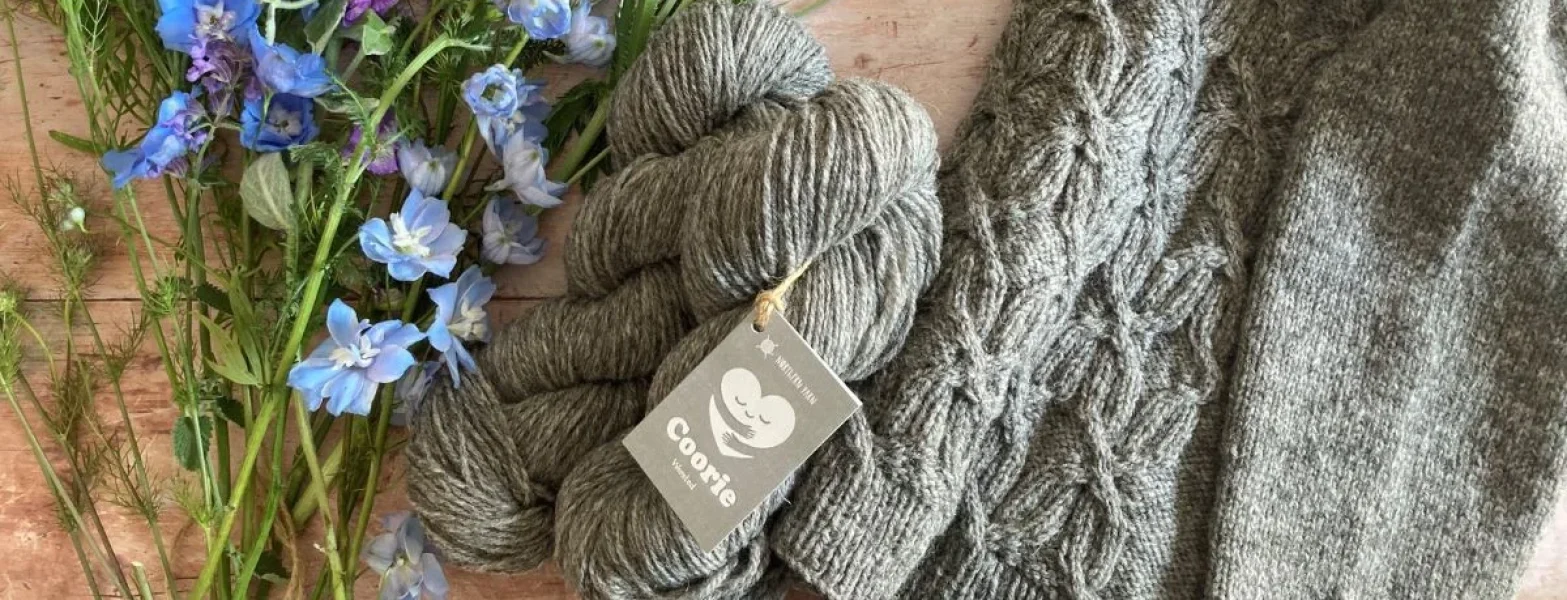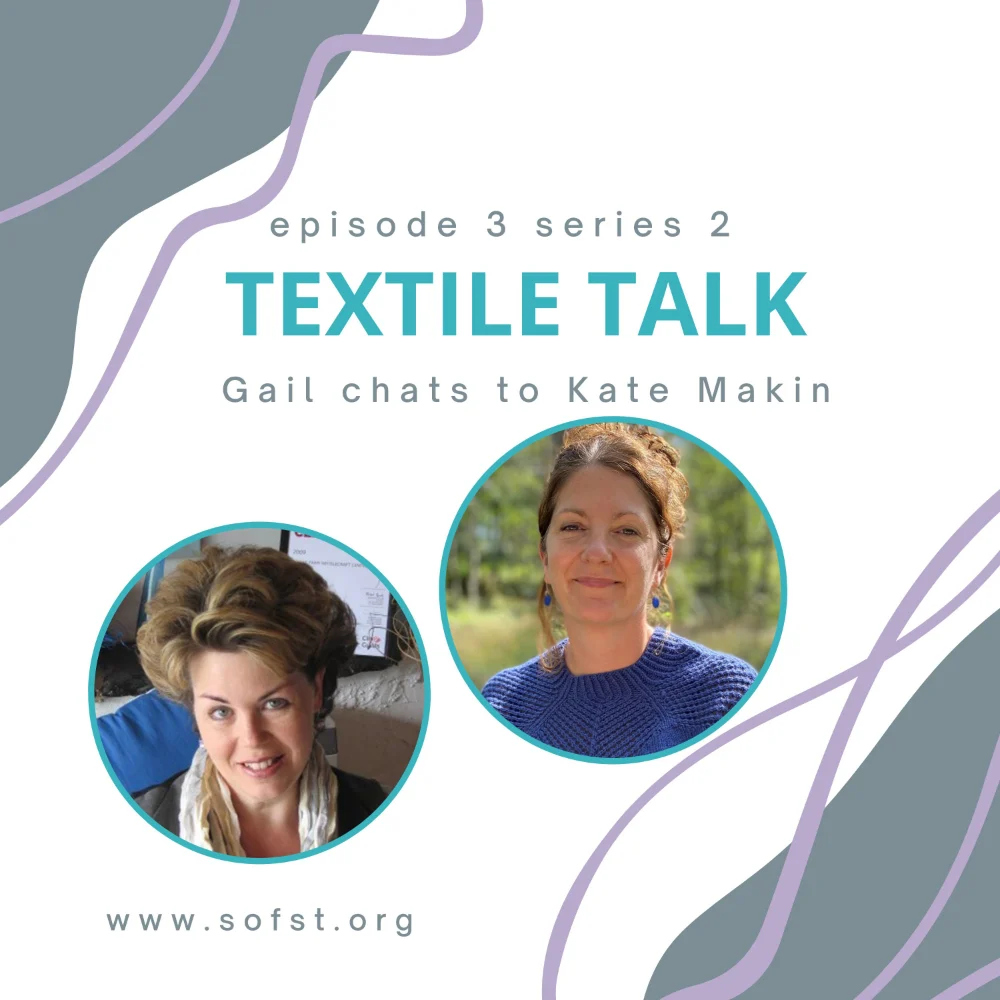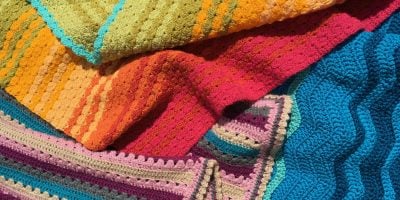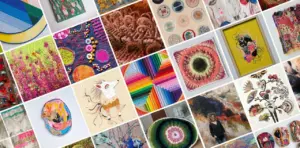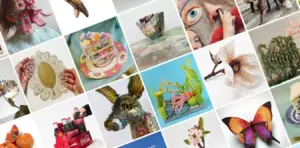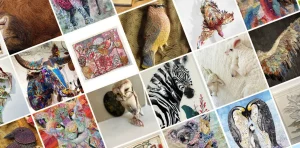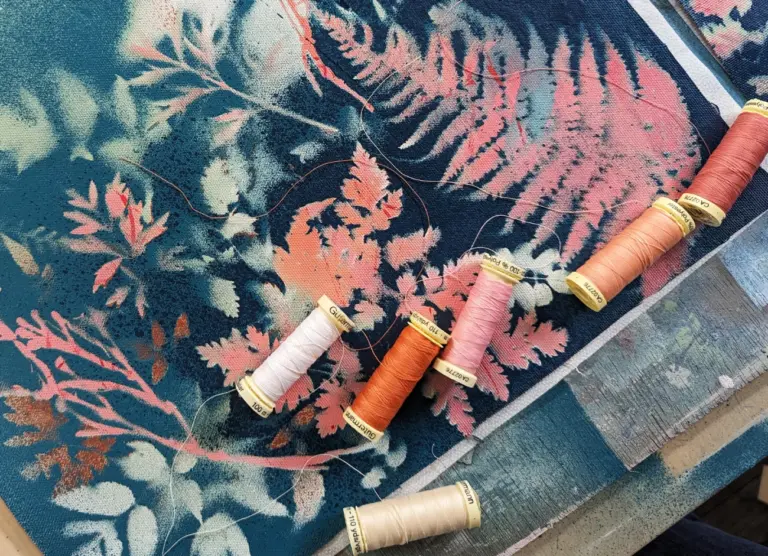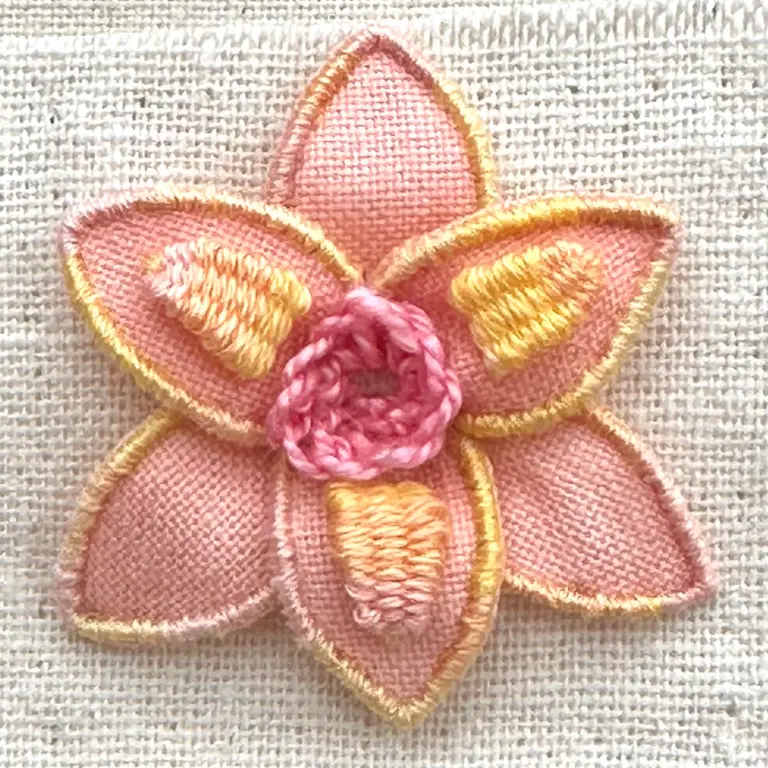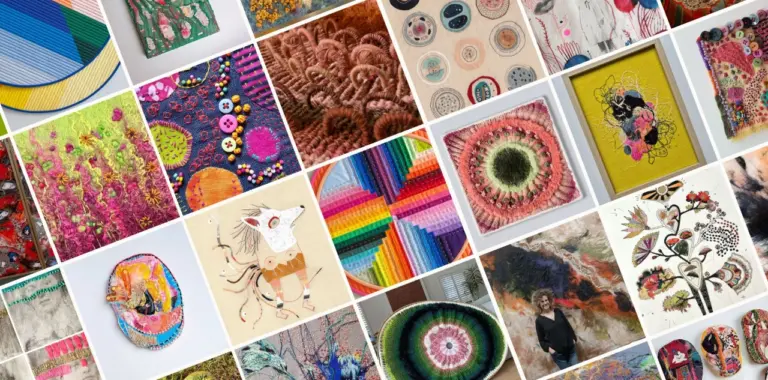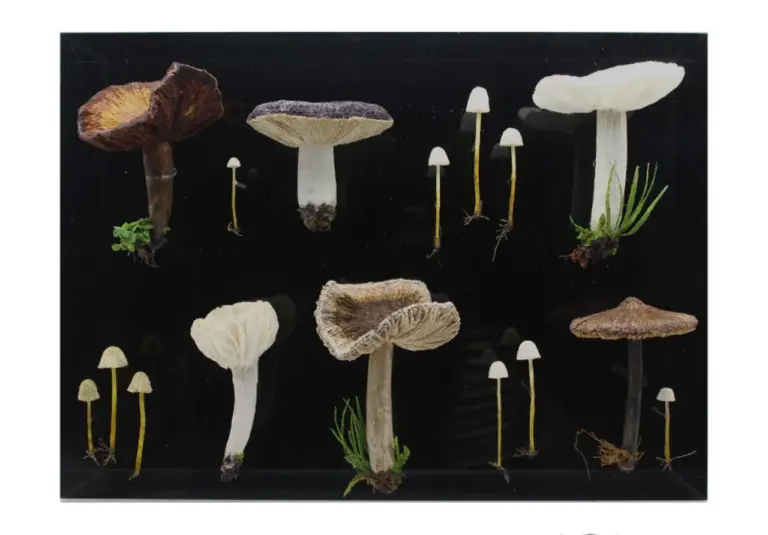Hello, everyone, and a very warm welcome to this textile talk podcast. I’m Gail Cowley and I’ll be your host today. Joining me is Kate Makin, who owns Northern Yarn in Lancaster, England.
Northern Yarn is an independent wool shop situated in the historic city of Lancaster, with a strong focus on locally sourced British wool, including their own line produced from the fleeces of local flocks of sheep. Owner Kate Makin, who joins me today, works together with local farmers, paying a higher than market price for good quality fleeces. She then follows the process from sheep to Skein, creating a completely traceable product using a renewable local resource. The unique nature of the shop not only attracts visitors from all over the UK, but also worldwide. Kate also organises local events promoting British wool and the women that work with it. Shepherds, farmers and specialists, encouraging people to switch from acrylic to natural fibres.
Textile Talk with Kate Makin from Northern Yarns
Listen to the podcast episode.
Kate Makin
Gail: Hello, Kate. Thank you so much for agreeing to do this podcast episode with us. It’s really lovely to have you here on the podcast.
Kate: Hi, Gail, thanks so much for asking. I’m really looking forward to our conversation today.
Gail: Yeah, me too. Me too. So, I wonder if I could start off by asking about your knitting journey. Really? How did you actually get into knitting? What did somebody teach you? Were you self taught? Did someone encourage you? I just wondered how that worked.
Kate: Yes, my grandma taught me how to knit as a child, so I was maybe seven or eight. I’d go and stay with her for a weekend and, yeah, I think it was just one Saturday afternoon. She gave me some yarn and needles and got me going and I just loved it. Loved everything about it. The fact that I could just be creative, I think. I don’t think I followed patterns until I was in my 20s, really. So I would just cast on and make people scarves, make teddies, clothes, make my siblings glasses cases, anything. Yeah, it was a whole new world and I spent quite a lot of time on my own, really, as a kid, so it gave me something to do and, yeah, totally hooked.
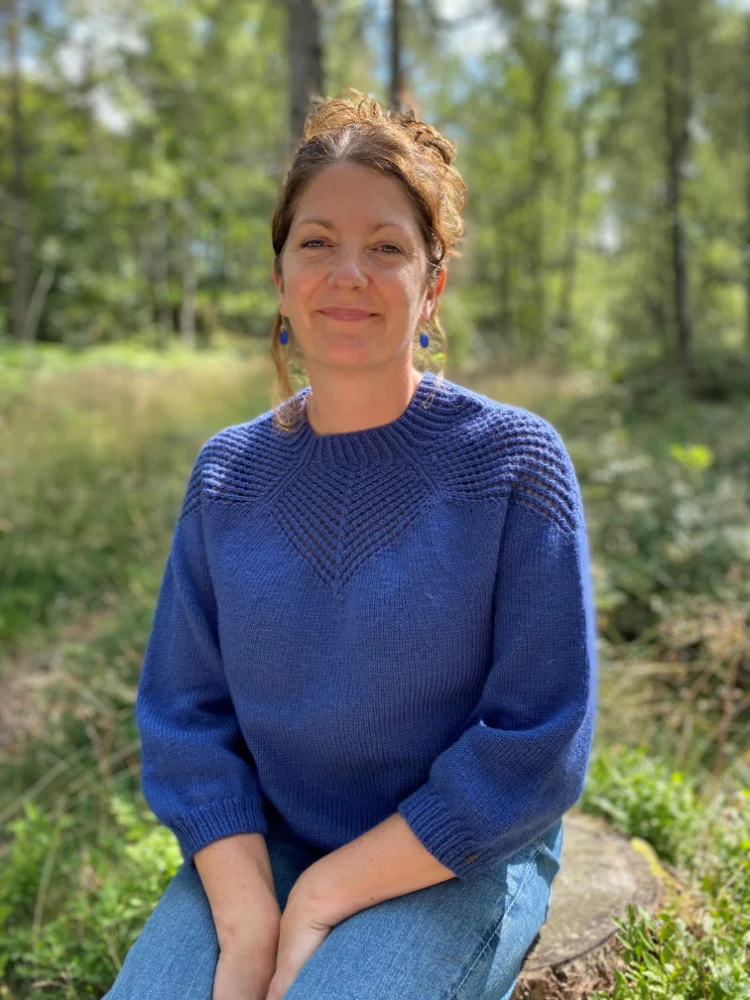
Gail: So have you sort of dipped in and out of it over time? Because I know that I have. I mean, I perhaps had a similar story and that my grandma taught me to knit and it’s something that I’ve picked up and put down a lot through my life. Not done it for long periods and then gone back to it.
Kate: Yeah, so I did. I think I knitted till I was maybe ten and then ten or eleven, and then I didn’t pick it up again until my 20s. Doing shift work. I was living in London and I’d do a whole 24 hours shift with the sleep in and then I’d be at home during the day and off until the nighttime. So I picked it up. Then again, actually, yeah, it was like I’d never put the needles down. Completely loved it. And I joined a group because I think back then I was like early two thousand s and YouTube wasn’t what it is now. And so being in a group was really important and I made some really good friendships, but just all the support and the frustrations that you get when you’re not sure what the pattern means or don’t know how to fix mistakes. And I found a supportive group was amazing then and really helped someone who can show you. Oh, no, it’s just this.
Gail: Yes.
Kate: Just done that.
Gail: Absolutely, yes. It does make a difference, doesn’t it? If you’ve got a community around you?
Kate: Oh, yeah, for sure.
Creating Northern Yarns
Gail: So what prompted you to take knitting from a hobby to a career and obviously then into starting northern yarn?
Kate: Yeah, it was one of those things where the stars seemed to collide, really. So we relocated back to the northwest. I’d spent 15 years in London and when our girls were very small, we decided to move back up, back up north. And I was still knitting. So I very much missed my group of knitting friends down in London. So I think the first thing I did was set up a local group because there were knitting groups here in Lancaster already, but because of the ages of my kids at the time, I couldn’t make any of them.
I thought, right, I’ll start a group. So I went to our local community centre and put the shout out on various things. And it was like 08:00 at night when the kids were in bed. And for the first few weeks I was on my own, really. I had a friend that would come along with me when she could as well. So that started me finding my people up here, really. And then we had a local wool shop in town and it closed down. And at the same time I was kind of looking to get into work slowly, maybe a couple of days a week. And so I think my sister in law mentioned, well, you could do something with your knitting. And I was very much, no, I don’t think so. You can’t really make your hobby into work, can you? And then it was not being able to find British wool, so, like natural fibres. And all of a sudden our environment was sheep farms, sheep farms everywhere. A real disconnect. It’s like if we are surrounded by sheep and farms and things like that. Why can’t I find at least British wool? Not even local wool.
Something in my head went, maybe something could work here. Actually, a few Internet searches. Local wool, Lancashire wool. I found a lady, Kate Schofield, who produces her own wool and works with farmers, kind of in the same way where that part of my business works now. And she was looking for an outlet, someone to sell her, so that, along with West Yorkshire spinners, Teaswater wolves, who I don’t think they’re running anymore, but Frida had her own teaswater sheep not so far away, and she hand dyed a. I found a selection of, as local as I could get it, wolves, and took them to market.
So I bought myself a gazebo. It was a big investment at the time. It was like a gazebo table with some wool. And that’s it. I went to market Lancaster in Gardstone, twice a week and started from there.
Gail: Now, that’s a chilly occupation.
Kate: Oh, yeah. Rain, shine, snow, and, yeah, there’s a lot of hanging onto your gazebo while everything flies around. But I can imagine not the getting up at 06:00 and carting everything down the road for 18 months. I did that. But it was a great way to meet people. And people who wouldn’t walk into a wool shop necessarily would come and stop and talk and be really interested in the idea of having local wool, having a product that’s made from sheep, you can just see down the road or everyone’s connected. And that’s kind of what I wanted with northern yarn. I wanted a business that would reflect our environment now at where we’d lived and the community of people. When I was taking the kids to school, I’d be talking to sheep farmers. So when I decided to try my hand at a business, I wanted it to be something that was about my life now.
Natural Fibres
Gail: Yeah. And how easy did you find it? Did you find the farmers quite receptive or. Not so much. I mean, was it a difficult thing to break into? No.
Kate: So I think it was like a simple question first, with a friend at the school gates. And she was talking, she told me that she kept pedigree pole dorsets, and at the time, I knew nothing about sheep breeds. I liked natural fibres and British wool, but that was about it. And I said, what happens to your fleeces when they’ve been sheared? Or. And she goes, well, they just go off to the wall board. We don’t get much for them. And that’s about it, really.
I think she had seen some of her wool come back, she’d found some online or something, but that was it. And then that again got me thinking. It’s like, right, I wonder how local I could get this and if I could have our own wool processed. And then when I decided to have a go, it was, right, well, I’ll take everyone with me, then. I’ll blog about it, I’ll learn with everybody and tell people what I’m finding. The difficulties and the obstacles. Trying to find a mill that would take the smaller amounts of fleece that I did have. Lots of them have huge minimum quantities, 200 kilos and things, and there might be an 18 month waiting list. So it was all of that. But I thought, well, it’s an adventure and hopefully everyone will want to know a bit more about it.

Gail: Yes. The process, obviously, the sheep are in the fields and they get shorn, but what happens after that, as far as you’re concerned?
Kate: With my first lot, I went to meet the sheep and talked to Liz. It was lovely. I saw the lambs being born and the kids got to bottle feed some of them, so it was really nice in that way. And I was a bit nervous about watching them being sheared. I kind of hoped that there would be nothing too traumatic. No sheep being hurt and no, there wasn’t. There’s a few clips and nicks here and there, but the sheep were looked after really well. It was a fast job, you can see, because she’s got hundreds of sheep that need shearing. But what happened then was we laid all the fleeces out. I mean, this was after I’d already bought fibre and fleece books and I’d gone to look about Paul Dorset and whether it would make a good yarn and the staple length of the fleece, if that was the right kind of length to be spun.
Once I’d done that and decided that I wanted to have it processed, so we came to look at the fleeces, check that they were good quality and if the sheep had been ill, you can sometimes see a break in the fleece, and that doesn’t help when it becomes to be spun to be a yarn. And then it was gathering it all up. Speaking to a mill, I found Halifax spinning mill, Paul Crooks, who runs that, and he takes smaller amounts. So with my. I think it was 60 kilos of fleece, he agreed to spin it for me and it was relatively quickly, within six months. So I took it to the mill and at that particular mill, Paul will scour it, so he’ll clean it there, card it and woollen spin and then send it back to me in Hanks. And that was my first yarn, which we called Janet. It was a lamb’s wool poldor. Lambs wool. And I named it after Lancastrian heroine, because, again, that is just connections with the people.
Gail: That’s the witches, isn’t it? Is it?
Kate: Well, no, the word janet, Janet was a really popular name. So she was 16th century. No, this was Janet Craig. So Cuomo is sort of out the beginning of the trophy Boland here. It’s just like a mile up the road from where we live in town, and her grandchildren were orphaned down in London. So this woman, so the story goes, rode alone on horseback down to London and brought her grandkids back in the panniers of her saddle on a horseback. And it was lovely, because once I’d released Jenna into the world, had people contact me from Australia and said, I’m related to Janet Craig, and I’m going to have to have some of that wool. That’s lovely. From where she lived.
Gail: Does the yarn always stay a natural colour, or does it go through a dye process as well?
Kate: With the first yarn, we sent in, 60 kilos, and I think we got 30 back. And I think generally, via the mill or the big dyers, you need 15 kilos of finished fleece per colour. So it just wasn’t going to happen with the first one. We just had it all natural. But Angela Gardner, she’s a textile artist, and she hand dyed some of our early yarns, which was lovely. We have now got a bigger line, Methra. So we did manage to blend four breeds of sheep, and we got a more consistent line. So we got lots back from the mill, and we were able to have some colours dyed there. So we’ve got five shades now. And, of course, by mixing some of black fleece into the mix, we get nice greys. So I’ve had some different shades of greys and browns and swabbles, which is nice.
Gail: And do you have customers that decide that they will dye their own? They buy the yarn and then dye it?
Kate: Yeah. So people really like the natural colours, because each breed of sheep and the way the yarn has been sung will create a different shade of colour as well. So it’s nice to see the way the different yarns dyes.
Gail: I suppose that would be acid dyes, wouldn’t it, that they would use for that?
Kate: Yes, they can. Or there’s Jeanette McDonald, whose colour works in Lancaster. She uses natural dyes, and she’s dyed some of our yarns, and it’s lovely. To see how vibrant, actually, you can get the shades of the pure wool.
Gail: Yes. Because it’s something that, with the natural dyes, you often think about them not being sort of very subtle colours, aren’t they not being very bright?
Kate: Yeah. Muted. Jeanette can get some really bright ones. It’s really interesting to see, and it’s really nice to have things that are dyed with such a natural product, with natural dyes. It’s really satisfying.
Gail: Yeah. So what kind of finished things do people use them for?
Kate: So we’ve got lots of. Quite a few designers now have made things, designed things with our methera and mammo. So lots of sweaters, shawls, hats, mitts. Lots and lots of things. You can do anything. We’ve had weaved shawls. Yeah. Possibilities are endless, really.
Gail: I’m sure they are. So how did all this sort of feed into starting the shop? Did the yarn obviously came first. And then what led you into thinking that you would start northern yarn? Yeah.
Kate: So the market store was northern yarn, so I started right there and then the yarn came. I set up a few events locally so people could yarn sample, so people could come and sit down and knit with pure wool. I think someone told me really early days that you won’t be able to sell pure wool in Lancaster, nobody will want to buy it. And it was inside me went, ok, I’m going to prove you wrong, because I knew that if I was interested in natural walls and locals, then there would definitely be, but other people would, too.
So the market was a really nice way of pulling together those people that were interested and, yeah, huge amounts of people and students now, just lots of people, I think, generally, are interested in where things come from, the provenance of either what they eat or what we wear. And that’s really coming through with young people, too. So the idea that there’s a fully traceable yarn for their hobby, or actually, if they’re studying and they want textiles, it became really clear that this was going to grow and grow, which was really nice. So after 18 months on the market, I decided to take a big step and go and get a lease on a shop. So I’m now in middle street, which is. We’ve been there for six years now, right in the centre of Lancaster. We’ve got space for classes upstairs and we’ve got lots of Socials. So we now have two socials a week, and we have one, a local community centre, too.
Gail: How do you find time to do it all? Because it must be. Obviously, people will want to come and do the social aspect after work, won’t they? I imagine, anyway. So that must mean you do some very long days.
Kate: Yeah. I don’t know, I think it’s just in my personality, but, yeah, two kids. We’ve got two cats and a puppy now. Growing and growing and. Yeah, I’ll do a full day at the shop. I’ll sort of race home, pick one of the girls up, make tea, come back to the shop, knit night and then come back and do bedtime as they’re older now.
Gail: My goodness, you’re superwoman.
Kate: I’m not sure. Yeah. But it’s great. It doesn’t feel like work because I enjoy it so much. Yeah, it’s tiring. But I think working for myself and doing something that I love, I just feel very lucky, actually. I’ve worked in a lot of jobs where I’ve not looked forward to going to work in the morning every day. For me, I’ll open the door. Hello, shop. And I’m here. It’s totally my comfort zone. It’s sanctuary in there and everyone who comes, it’s great because they love wool too, or they wouldn’t be coming. And you can tell people enjoy coming to the shop and looking around and chatting and I feel very lucky, really.
Running the Business
Gail: Do you have any help in the shop? Can you call on anybody and if you don’t feel well or anything like that?
Kate: Oh, yeah. So we’ve got two lovely women working with me, Ruth, who works every Tuesday. So that’s why I’m able to talk to you today. She covers the shop and she does the daytime afternoon knitting group. And Ruth and Rachel also run some of the classes now. So we’re about to run a sticking course, but they’ve done colour work courses, we’ve done socks, how to knit a jumper in the round, because I love seeing people learn new skills and things that I once found difficult and would stay away from, like colour work or knitting around any of those things. And when you try it with a bit of support, it’s great. It’s not magic, it’s just learning a new skill. So we really like either sharing those at the socials or with classes.
But, yeah, there’s Ruth and Rachel does the classes. And I’ve got Lola Rose, who’s a student at Lancaster uni, and she’s just the quickest knitter in the world. I think she makes some beautiful things. And also we’ve got Lisa, who’s joined us recently. So, yes, I definitely get days off and holidays and all the time want to spend with the kids at the weekends. I get some weekends off, too.
Gail: Yeah, I think you need that backup, don’t you? Because otherwise, if you push too hard, it can start to feel like a chore.
Kate: Oh, yeah. And it’s really important that I get time off. Like, we close over Christmas, I think we do up to 23rd, and then we don’t open again till the beginning of January. And it’s really nice just to have that time because someone else, my friend Wendy said, it’s hard turning your hobby into a job because it sometimes ruins your hobby. It doesn’t something you enjoy anymore. And luckily that’s not happened. But I can totally see how it could easily, if you don’t give yourself a break sometimes, like in the evening, because you could work all day. I could open my laptop at night and think, well, I’ll just do those accounts, or I’ll just order that wool. And, yeah, you have to kind of say no.
Gail: I think that people often assume that when you run a craft business, that all you do is sit there doing the craft. But of course, that’s not true, is it? Because you’re running a business then, and you’ve got all the things that have really nothing to do with the craft. So it’s sort of social media, blog posts, as you say, accounts. There’s just so many things forward. Planning, paying bills. There’s so much, isn’t it, that goes into it that actually, I don’t think perhaps people think about.
Kate: No. Yeah, lots of people come in. It’s like, oh, I’d love to sit here and knit all day. And it’s like, yeah, I don’t do that anymore. Which is great because the shop’s busy and we do online, too, and we do really well online, and we get orders from all over the world. So when I’m not serving people in the shop, I’m kind of upstairs packing parcels and then I’m processing them. So sometimes I make myself do a few rows at the shop because it’s like, no, I’m my own manager here, and I can do half an hour on this sock. But it’s not what you might think. It’s still very enjoyable.

Gail: It’s almost a second career, isn’t it? Away from the knitting, to do all of the business side.
Kate: Yeah.
Gail: Were there any sort of pitfalls when you were setting the shop up? If someone else was thinking about eventually doing that, is there any advice that you’d give them?
Kate: I would say I enjoyed the market. It was a lot of work, but it was a really nice way. As an idea of how it might be and all the work involved, I’d say definitely get your accounts sorted sooner rather than later and make sure that we keep on top of that. So I kind of learned the hard way. But if you’re enjoying. I think I stayed away from a shop at first because I just thought it’s all the hours, actually, when I was on the market, I could pick the days that I wanted to work, so I could just do Wednesday, Thursday and Saturday. But with a shop, you don’t have to open every day, but you’ve got more of a responsibility.
You’ve got rent to pay and maybe business rates, depending on where you are. But if it’s what you want to do, try it. With Northern Yarn I’ve just gone for it, I guess, and I’m really glad that I did. It was always a kind of day by day thing for me. It’s like, well, let’s just see what happens. Rent can be a real pitfall, because depending on where you are, you might have business rates, and it does take a big chunk out of your profits at first because you’re still building up. And that was the good thing for me, because I started on the market, I was able to build up a customer base there. So when I moved to a shop, it wasn’t just all really fresh and no one knew where I was or I already had customers who would come and find me. So I did find that useful. If anyone was thinking of doing something like that, you could do markets first. I think there’s quite a few shops in Lancaster where that’s the case, I suppose.
Gail: Probably all of us have had. I mean, we lived near a little market town, Olmskirk, and we’ve had various wool shops there that have come and gone, I suspect. I mean, I don’t know what you put your success down to, because you obviously are going from strength to strength, but I wonder, with some of those wool shops, if they haven’t specialised, because what you do is really quite specialised, isn’t it?
Kate: Yeah, I think that really has helped because it gives me something to talk about. It gives me something different. Yeah. Like you said, people will come to the shop and seek me out, either online or in person, because of what I do with the local wools. And it’s so important to me that I can blog about it. I can take pictures of the sheep, the farms, and. Yeah, it gives it a whole different spin than maybe just wool you could buy online.
Gail: Yeah, I was actually talking to somebody that was. Well, he was developing a new process, actually, for dying for wool, an eco friendly process a few months ago on the podcast, and he’s based in Texas, in the US, and he was telling me that somebody out there had started a business called, I think it was from sheep to shirt. People can actually. I mean, the clothes are very expensive, but they have their shirt woven from a particular sheep and there’s that sort of link, and apparently he’s doing really well with it. So I suppose that link with the original yarn or the original animal or whatever is obviously very important and perhaps getting more so.
Kate: Yeah, I think it is. I think, as I mentioned earlier, provenance is important. And being able to say, especially when you’re taking such a long time to knit something or to crochet or weave, it’s like, yeah, I know exactly where this was made. I know there’s been no air miles. I know that it’s not had any. If it’s natural, no chemicals. Yeah, I think it’s really important to me, certainly, but it really helps me connect. It’s another step to connecting me to what I’m doing.
Gail: Yes. And again, when I knit, I always think that I never use cheap yarn because I don’t have such a massive output that the original cost of the yarn particularly matters to me. But also, if I’m going to spend that amount of time on something, I want it to be a really good product. When I finish, I want to enjoy handling the yarn. I want to enjoy sort of actually knitting with it, and I want to enjoy the product at the end and hope that it’s going to last quite a while.
Kate: That’s it. And feel good about it, as you said.
Gail: Absolutely. Yeah.
Kate: I think environment was something on my mind when I started the shop, and we do sell sock yarn, which has some nylon in it, but I have done lots of exploration with no nylon socks. But apart from that. Yeah, I don’t want to have a business that damages our local environment when I’m selling a product from it. Absolutely, yeah.
Promotion
Gail: No, absolutely. You do shows as well, don’t you? Which I know we haven’t sort of mentioned yet, but could you tell us a little bit about.
Kate: Done? Well, at the minute, I tend to do Yarndale, which is in Skipton. It’s September, September time. That’s a really lovely one. There are live animals, there are lots of talks you can go to, and we just take our own yarn. So in the shop we’ve got wool from lots of places. We’re shortshire spinners, John Arbon, new Lannock and Crookebeck herd, lots of different ones. With Yarndale, we just take our own because it gives us something to talk about and it’s sort of. The USP of our know is the production of our own wool. But yeah, I can really recommend Yondale. It’s a really nice one. It’s in a big sheep auction march, so everyone’s in their own pen. It’s really busy. There’s just a lovely atmosphere. It’s over a weekend, so a Saturday and you know that one isn’t there anymore.
Gail: Oh, I didn’t know that. What a shame.
Kate: Yeah, I think they stopped last year. And woolfest, I don’t think that’s going anymore. But there’s a cumbrian wool gathering now. I think the first one was last year and there’s another one this June, so we’ll possibly be there. But yeah, we don’t manage to do too many shows at the minute. Just. It’s just a time thing and weekends that are eaten up, family and things like that. So one yarn daily year is almost.
Gail: Enough, I would imagine, that packing everything up because you do have to take the stock from the shop, don’t you, really? So in a way you’re just changing your place of business for that weekend, I imagine.
Kate: Yeah. Well, we’re able to keep the shop open because we just take our own yarn and we’ve got quite a few lines of our own yarn now we can fill a stall with that and then leave the shop in Ruth Lisa or Lola Rose’s capable hands and they sell what we’ve got left in the shop. We’re quite a big shop, really. So luckily we’ve got a decent amount of stock to keep us going. But you hire a van, you spend the whole day before setting it up and you’re there with air till late. And then we set up again 07:00 in the morning and you don’t get back until 07:00 Sunday night. So it’s really enjoyable. It’s exhausting. But I always come away from it thinking, oh, that was great people. And it’s nice because you go to a show, I think, to discover new producers or new Yarn Dyers or anything. And usually everyone’s in a good mood and just enjoy finding new people, new connections.

Gail: For the things that you keep in the shop. I suppose I’m thinking more along the haberdashery lines here that you’ll obviously need. Do you yourself have to go to a trade fair to source those?
Kate: That’s a good question. Sometimes I don’t feel like, I am a good yarn shop owner because I totally should go to trade fairs. I don’t go to many. And again, it’s just a time thing. I stock Addie and chow goo, Nipro and hire from the smaller independent producers, I did go really early on to a Birmingham show and I would like to go to Harrogate this year, but for someone like me, I’m kind of more about finding out about new local british yarns and the small producers and farmers and that’s kind of where my attention goes.
Gail: Yeah. Do you yourself have preference as to which needles you enjoy using? Because there’s so many out there, aren’t there?
Kate: Yeah, we’re really lucky and there is so much choice. I am a new convert to Chowgu. They do do bamboo, but I like their metal needles because I generally always knit on circular needles and they’re light, they’re nice and sharp, but not too sharp. There’s no snagging on the joins and the cable has no memory, so it doesn’t kink and twist everywhere. They are kind of the Rolls Royce of needles, bit more expensive, but they’re really lovely and dead popular in the shop.
Gail: I’ve never heard of that. And they’re called chow goo.
Kate: Yeah, it’s chinese for crafty lady. Chow goo. Yeah. So they do it, lots of interchangeable sets and they do minis and sock needles and very fine needles. But, yeah, they’re a really lovely brand.
Gail: Because again, that’s something else. I think that increases your pleasure when you’re actually knitting. If you’re using lovely yarn and you’re also using really nice knitting needles, that makes a difference, doesn’t it?
Kate: Yes. I’ve been using a pair recently that was snagging. I can’t remember. It wasn’t one of mine. Of course not. And it was just annoying me. I think I was knitting socks and it was just pulling on the join. And some needles will just do that after a while. But I had to change because in this busy life, you’ve got, say, half an hour, an hour to yourself of mindfulness and relaxing and. Yeah, that little snag every time it goes round is just going to drive.
Gail: You don’t want to spend it fighting with your needles, do you? No. There are some absolutely beautiful sets out there for obviously quite a lot of money, but I think they make gorgeous presents as well.
Kate: Oh, yeah. And especially if you’re starting out getting yourself a collection of circulars, I think it’s well worth investing in a set if you haven’t got lots already, but, yeah, Christmas this year, lots of people are investing in the chargu complete sets because they’re just very pleasant. All the packaging is very lovely and all nice and neat and put together.
Gail: They’re the one thing that don’t really. You don’t have to choose someone’s skill level, do you? Or yarn preferences or anything like that?
Kate: No, it’s just all there ready for you.
Knitting
Gail: So when you’re knitting, assuming when you get the time to knit, what sort of things do you knit now? Do you knit for the family or for yourself?
Kate: Yeah, it’s a mix. I kind of go through phases. I’m not a monogamous knitter, so I’ve usually got more than one thing on the needles and there’s usually always something I can take to knit nights. So it’s either socks or something where I’m going round and round, dead easy, because at knit nights there’s lots of conversations and things and it’s so easy to make a mistake.
I’ve usually got something small and easy and then, yeah, I like jumpers at the moment, so I’m knitting lots of jumpers for me, but because they’re for me, they’re for the shop, you see, it’s like my walking wardrobe, I tell people, because the shop is covered in samples and sweaters and jumpers and hats, so I can kind of go into the shop and think, right, I’ll wear that one today that just happened to.
Gail: Be in your size.
Kate: Yeah. One that I made for my husband. Supposed to be for my husband, but it didn’t fit. But it fits me.
Gail: That was handy.
Kate: Yeah, he has got one of his own now, so I do knit for the family too. And actually recently I’ve knitted a couple of hats for my uncle and auntie in America and my cousin had a baby, so I crocheted a blanket and. Yeah, it’s a nice mix.
Gail: Because we’ve talked, actually, that’s really interesting point. We’ve talked, obviously, about knitting, but obviously your yarn will be used to crochet as well.
Kate: Oh, yeah. I mean, I’m predominantly a knitter, but I’ve taught myself how to crochet. Very basic sort of stitches. I can treble all the way round and round and round. And that is a kind of goal of mine over the next few years, to get a bit more proficient and be able to read those crazy crochet chart patterns and things.
Gail: It doesn’t help that they’re all country specific.
Kate: Does it like different terminologies and things. But, yeah, almost certainly people go into the shop and say, I’m looking for crochet yarn. Is there a difference? And there isn’t really. You don’t want a splitty yarn to crochet with, but definitely all our natural local wools, people crochet with them too.

Gail: And usually, actually, it takes more yarn to crochet, doesn’t it, than knit?
Kate: Yes, it does. It eats it up.
Gail: So if somebody came into the shop, which I’m sure they do on a daily basis, and asked you for a recommendation for a first knitting project, what would you suggest to them?
Kate: So, quite often, I mean, we’ve got a beginner’s kit, really, and it’s a scarf and it’s a tin can knit design. They kindly gave us permission to use it in our kit and it’s just like garter Aaron wool. So something not too fine, I think, is often a good starter and you’ve got a garter stitch and then rib, and then you can just practise and practice and practice, and lots of people enjoy that. Some people want something smaller, so it could be a hat if they’re a bit more of an adventurous beginner. Like a hat in the round is great because you’re already getting over your fear of circular needles. Some people really worried that it’s going to be difficult when actually, I think it’s easier than straight.
Gail: No, I agree. I think it’s easier. I knit socks myself for all of us when I get the opportunity, and I much prefer circular. I’m a real convert.
Kate: Yeah, it’s great. I’ve not looked back. I think it was ten years ago, I made a jumper, or might have been socks the first time I used them, and I just thought, oh, yeah, this is the way to go, because I don’t like sewing or sewing up and I would always worry about getting the sleeves looking good, trying to match up the stitches to the pieces. So now I love knitting in the round. So a hat can be a really nice beginner’s project, or even socks. Sometimes we sell like a six ply sock yarn that’s a bit thicker. And like the Winnick mums, patterns are so good and easy to follow with tutorials on her blog. So, yeah, it depends on adventurous people are feeling.
Gail: Yes, I think I’ve got all of Christine’s books. They’re really excellent patterns, aren’t they?
Kate: Oh, really good, yeah.
Gail: Do you find a lot of people coming in and asking to make I know people that haven’t done it before and do you find that they tend to be younger or older or is there any particular age group that you can see sort of coming to knitting more now?
Kate: No, it’s a really good mix, I think, even this week. What day is it? Tuesday. Yeah, yesterday I think we had a couple of people in and one was a young person who wanted to try knitting, and then there was an older woman who came. A lot of the time they might have done it as a kid. As a child they made something and then now they’ve got time in their lives to start a new hobby or try something again, especially in winter when it’s cold and long nights and things. So, no, it’s a really nice mix of all ages, men and women, which is really lovely. Wanting to try something where it doesn’t involve scrolling. You can turn the telly off and you can just lose yourself in knitting or crochet. That’s the lovely thing about it.
Gail: That’s actually really nice that more men are coming to it.
Kate: Yes, lots of, say, my older, maybe older customers say that their uncles taught them how to knit. Men would have been, they knitted in the war, say they would have knitted their socks. So, yeah, I think it kind of changes over time, doesn’t it? Fluctuates in which genders have been knitting the most? But soldiers definitely would have been knitting.
Gail: Yes. I suppose most things, craft wise, are cyclic, aren’t they? They tend to come around. Trends come and go, essentially. Really. I suppose only so many things that you can do with a pair of knitting needles.
Kate: Yeah, exactly.
Gail: So with things to keep coming back into fashion.
Kate: Yeah. I mean, it’s nice now because I think it’s so much more global, isn’t it, with Ravelry and you’ve got patterns from designers all over the world. And I really like whenever I’m knitting something new, there’s generally a stitch or a cast on or a cast off that I’ve not done before. So there is new things to learn all the time. I get some customers in their seventy s and eighty s and they may be trying knitting in the round for the first time and love it. It’s really nice. There’s just lots of new things even within something as simple as needles and wool to learn.
Gail: Yes, absolutely. I know that, obviously. I think you’re saying that you have two knit nights in the shop.
Kate: Yes. So we have one every week on a Tuesday afternoon, two till four, and then we have one every other week on a Monday night in the shop. And we do one at a local community centre once a month as well.
Gail: Do people bring along their own projects to those?
Kate: Yeah, whatever, anything. We don’t have any stipulations at all. You don’t have to book. It’s just one pound 50 donation towards the tea biscuit, lighting, heating, whatever, and then you’re good to go. So just bring whatever you’re working on and then it’s just a really nice couple of hours just focusing on your project and looking at what other people are making and being inspired by that. Or you might need a bit of support with a pattern. So it’s really lovely. Everyone’s so supportive. It’s a really nice community and I.
Gail: Now we touched just briefly on actually making up garments which can make or break, can’t it? Knitting. You can knit beautifully, but then you come to make it all up and I think it’s an area that people tend to be very concerned about. Do you do courses in actually making things up and how to get the scenes correct and whatnot?
Kate: Yeah, we have had a course, not for a while, actually. We did a finishing course. That was how to fix mistakes, actually, is a popular one. And we found, even with our learn to knit course, one of the most frequent questions that’s come up is like, well, how do I fix that when something goes wrong? What does that mean? And that’s so important. I think my tendency, when I was learning was just to find you need someone to show you. I mean, now, that’s why YouTube is so helpful, because generally, if there’s any mistake or anything at all, someone on YouTube will have made a video showing you how to fix it.
Gail: When you’ve dropped the stitch sort of.
Kate: 20 rows back, it’s like, oh, no. Whereas I think when I was learning, it would go in the corner and the naughty corner, and I wouldn’t talk to my name for a while until I was able to see someone to say, what do I do? But I’d say that comes up a lot and how to fix mistakes, and it’s really important. It’s nice that people learning. You need just that bit of confidence, don’t you, that if something goes wrong, you can fix it quite easily. Yeah. You’ve reminded me, really, that we probably should do that course again.
Gail: I think that if you leave a project and there’s a mistake in it and you can’t see how to go forward, that’s when you just tend not to return to it, isn’t it? I always try, if I can, to make myself fix it there and then.
Kate: Yeah, that’s a good tip, because I think, as you said, once it’s put away, you kind of forget where you were up to what the problem was. It all goes out of your head, doesn’t it?
Gail: It does.
Kate: Top tip.
Gail: It does, yeah. Do it straight away while you remember what it was, because otherwise it just sticks in your mind. There was a problem with that piece of knitting, but you can’t remember what it was and you certainly don’t know how to fix it.
Kate: That’s it. So it stays in the bag, unloved.

Future Plans
Gail: Oh, bless you. So I wonder what’s next for you and for northern yarn. Do you have plans for the future?
Kate: Yeah. So what I’ve really enjoyed, actually, this last year, we had yarn processed from a really young shepherdess called Jess. She contacted me over summer and she had started her own flock of sheep with her own pocket money. So she’d bought a couple of Shetland to go alongside her granddad’s longhorn cattle. And she contacted me because she, at 15, knew that they had a value, despite won’t have enough to get to the wall board, really. So I was so intrigued and inspired, really, by her contacting me. And so I went to visit the sheep and we managed to get a run done, along with Jess and another local farmer, Diane, who came to the shop one day looking for Shetland. And it was just a conversation because I knew Jess’s wouldn’t be enough for a run at the mill. And then she said, oh, yeah, I keep Shetland sheep. I spin sometimes my own yarn, so I keep my Shetland for yarn only, really, which, again, is brilliant. And it’s like, right, well, I don’t suppose you’d have any fleeces this year, would you, that I would be really interested in having a run. And it went from there and we got it back in November. It’s actually sold out now.
So it was a small run and I haven’t done that for a while, really. I had such a small run from two flocks and two women owned flocks and I loved it. The yarn is absolutely beautiful. It’s 100% Shetland. It’s a really dark grey. All Jess’s sheep were black and all Diane’s a mix. So it was really exciting to see what colour it would come, what shade of grey it was going to come when it came back. And because the sheep are so well looked after and they’re young and it’s like Shetland I’ve never felt before. It’s beautiful. So I’m really excited to have that done.
Now we’re going to do the same thing and Jess has bought more sheep this time, and Diane has a few more sheep. So we’ll hope to build up that range and look at some other. I want another local yarn done again from some friends who have a farm out in Corma. We were actually meant to have theirs done last year, but because the sheep had to have a certain medicine before shearing, it meant we couldn’t have it sheared, because that’s also important. The wastewater from the scouring, when they’re cleaning the fleets, goes back into the system, and certain chemicals you definitely don’t want going back into the water. Yeah, I’d say I’m really looking forward to have some more. Selena, we called it. I called it Selena after Selena Martin, who was a local Lancastrian suffragette. And I thought, yeah, you know, someone who fought and went to prison for the rights of women and things. And here are two women owned flocks and women owned business. And, yeah, it felt a really nice connection.
Gail: Yeah, a lovely way of supporting them, especially for somebody so young. I mean, that’s incredibly enterprising.
Kate: Fantastic. And she’s such an inspiration. She wants to be an animal vet or a farm animal vet when she grows up. And, yeah, she’s great and loves the sheep. And another thing that we do, I don’t think I mentioned, is we pay more than the wool board would give for people, for farmers and their wool, because generally it costs one pound 35 a sheep to be sheared if you’re getting people in, and then you have to pay for the transport to get the fleeces to the wall board. And then it’s only after they’ve been auctioned that they get money back. And at the minute, depending on what breed you’ve got, it doesn’t really cover your costs. So it’s kind of viewed as a waste product by lots of farmers. But, yeah, Jess knew it definitely wasn’t a waste product. And contacting me that way.
Gail: Yeah, she knew her value, which is great. One pound 35, it feels like so little, doesn’t. It’s probably not even half the price of a cup of coffee.
Kate: Yeah, that’s it. And then there’s a connection between, well, why is the wool expensive? But it’s the processing and all the costs associated with that are expensive to do and slow. It’s a really slow process, getting yarn processed right from the field.
Gail: And from what you were saying, there’s quite a bit of wastage when it actually, from the original fleeces, when they go to be processed, there’ll be some wastage.
Kate: There yeah, I think we sent in 35 kilos, and there’s really only a couple of mills that will process that amount, because you do lose a lot in the processing. But we started maybe with 35 kilos, and then we lost ten or twelve kilos when it was scoured, so when it was clean, so the landlin, or most of it, is washed out, and then you lose more in this carding and spinning. So I think we came back with twelve kilos. Gosh, not a lot at all. No, you have, the less you lose, I think.
Gail: Yeah, I’m sure. Do you ever think about going into something bit more exotic, such as alpacas? Because I know there are alpacas locally, aren’t there, to Lancaster?
Kate: Yeah, there are. And yes, I would. I like alpaca. It’s really nice blended into yarns. Yeah. Never say never. I haven’t yet. I’ve kind of stuck to wool, pure wool. But yes, if anyone’s out there with.
Gail: A herd of alpaca. So just to finish. Okay. I wonder if you, I suppose, like other people that work with the public, have any funny stories to tell or anything. Any encounters that you’ve had with people that have stuck in your mind.
Kate: Oh, yeah. I mean, every day brings something like, now, from the market days and being asked, know if I had any Jeremy Corbyn coloured wool.
Gail: I tried to think, what colour is that?
Kate: And then we’ve got someone who’s making bio cement for an environmental project. But it’s funny. So, Katie, how I think, you know, I was talking about something that happened in the wool shop, and it’s actually not with a customer. It was me. It can come with a bit of a tip and that’s don’t use wool as teeth floss. And I know most people wouldn’t, and I don’t know what made me think it was a good idea, but I think I had a seed in my teeth and then decided, I need to get that out. There’s just customers coming in. I haven’t brought my toothbrush, but okay, I’ll just use a bit of this wool. And then got it stuck in my teeth. So I had this six inch piece of yarn sticking in between my front teeth and then it just jammed. I couldn’t get it out one way or the other way, so it’s panicking. Oh, my. What would that look like if someone came into the shop, hanging out my mouth, so enthusiastic.
Gail: You eat it.
Kate: For everything. So I had to trim it and then run to the shop and get floss and then try and it was just a disaster. It was awful but it was making everyone laugh night and I kind of said I wouldn’t tell you but I have now.
Gail: Well done. Thank you. Thank you so much for joining me. I have really enjoyed talking to you. Kate, is there anything else that you’d like to say before we finish off? Anything about the business?
Kate: Just thank you for your support. If you’d like to jump onto the website, I do try and blog fairly regularly about all the yarns that we have produced and you can see pictures of the farms and interviews with the farmers and things. So yeah, just if you want to hop over and have a look that’d be great.
Gail: And we’ll make sure that we include all those addresses with the podcast. So I say thank you ever so much for doing this. It’s been lovely to speak with you.
Kate: Really nice. Thank you. Gail.

